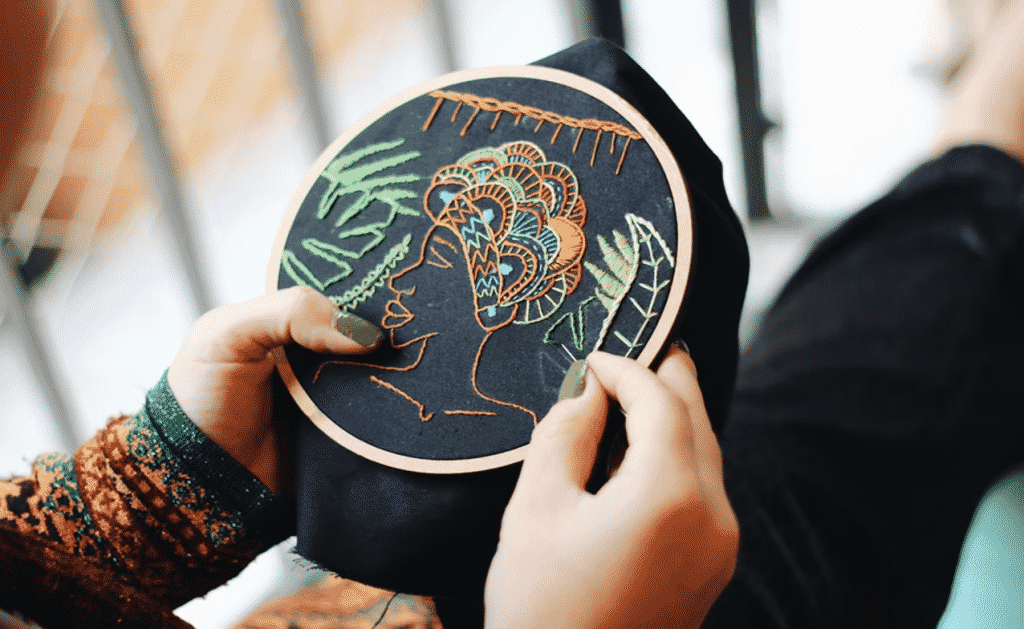Many people confuse embroidered products with woven products. The main difference is that embroidery is stitched directly into the garment to create the design. Weaving involves different threads that are intertwined to form a pattern. The best example of this is on garment labels. There are numerous services for custom embroidery Sydney and surrounding areas use, so understanding the art could help you use it more efficiently in future.
So, in today’s article, we are going to learn some facts that you probably didn’t know about embroidery.
Surprising Facts About Embroidery
- There are about 2,000 stitches used in a square inch of an embroidery design.
- Embroidery machines can run up to 1000 stitches in a single minute.
- There are over 1500 different colour threads to choose from.
- Threads can be Pantone matched. This means that you can find the perfect match for the colour you need.
- Industrial embroidery machines can have up to 50 heads.
Embroidery Defined
Embroidery is the craft of decorating fabric or other materials with a needle. You can also add pearls, sequins and beads to fabric using embroidery. These designs are mostly found on caps, coats, overlays, dress shirts, golf shirts and dresses.
An Ancient Form of Art
Cave paintings can be traced back to a thousand years ago. For as long as humans have been alive, they have been making art. And embroidery also dates back further than you think.
Early man constructed needles from ivory and bones. They made threads from the fibre of plants or from animal sinew. They started adding stones, bones and beads to the garment and that’s where embroidery was born.
Garments have been found in China, Egypt and Northern Europe, dating back to 1300BC. European cultures have held the art form in high regard and applied it to their religious clothing items.
Represents Your Status
Embroidery became a representation of one’s social status in society. The style rose in popularity in the Middle East, where rich Muslims embroidered designs on robes, flags, uniforms, handkerchiefs and shoes. The more embroidered items you owned, the higher your social status became.
Embroidery Digitising
Embroidery always involved painstaking labour that was very hard on the workers’ fingers and hands. This all changed about 30 years ago when the first embroidery software was designed. The procedure uses a magnetic board labelled as the digitising tablet. This is hooked to a computer via a cable. The designer will then pin the points onto the board to formulate the digitised design.
Modern digitising software is much more user-friendly and allows for complex features that amplify accuracy and efficiency. This software makes it possible to stitch intricate designs with precision, making small letters easy to read.
These Machines are FAST
Another surprising fact is how fast automated machines are. Their immense speed allows them to create 7, 500 intricate stitches in one square inch of space in a very short period of time. The bridge between artwork and embroidery is a digitised file. These days these amazing features can be used to create intricate designs in minutes, instead of days or weeks.
Each Stitch has its Own Name
Embroidery is made up of numerous stitches and each one has its own name, such as:
- Bean stitches: This is a running stitch that goes from point A to point B and from point B back to point A.
- Fill stitch: A fill stitch is used when you need to cover a larger design area. You can change directions to create different effects within the design.
- Running stitch: These are single-line stitches that run one stitch between two needles where they penetrate the fabric. The thread goes from point A to point B. This stitch is used for very fine details.
- Jump stitch: Moving from one point to another within the frame without stitching
Children will Benefit from Learning Embroidery
Embroidery teaches children hand-eye coordination, teaches them to identify colours and how to create unique designs. These skills build academic skills and manual dexterity. Children will be proud of their achievements and this will boost their confidence.
Learning embroidery will also help them express themselves more. It’s a great hobby because it’s inexpensive and environmentally friendly. They could also sell their designs to family members or friends. So, the ripple effect of teaching your child this skill is impressive.
Used in Therapy
Embroidery is often a coping mechanism used by therapists. They teach it to trauma victims to provide a sense of calm and comfort. Soldiers have also found solace in practicing embroidery. Disadvantaged veterans use these skills to return to the workforce. They can also sell the items they create to help pay the bills.
If you suffer from depression, embroidery can be used as a coping tool. It has a calming effect like meditation or yoga. The repetitive motion will help clear your mind and give you something to focus on. You will also experience a sense of accomplishment once your design has been completed.
Final Thoughts
Who knew how fascinating embroidery was? It’s been around for thousands of years and can be used to decorate just about any item. Modern technology has made embroidery quick, easy and affordable. Most companies use embroidery to add details to their uniforms and other promotional items, so its impact in society is bigger than you think. What will you use it for?


